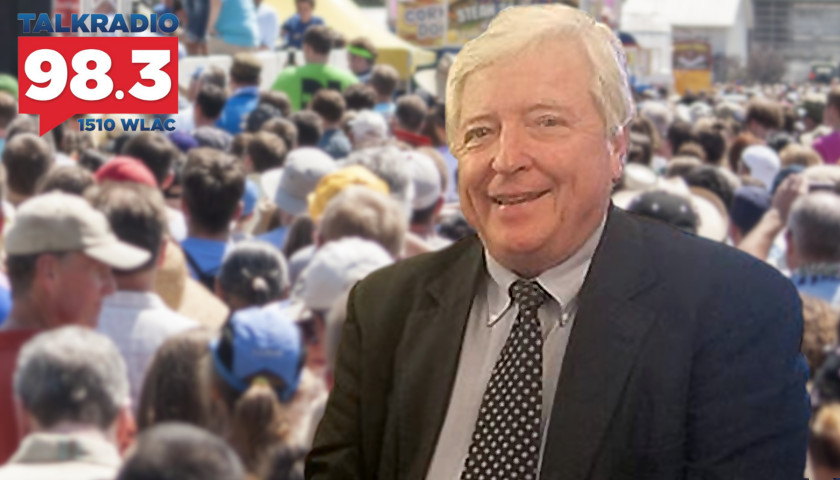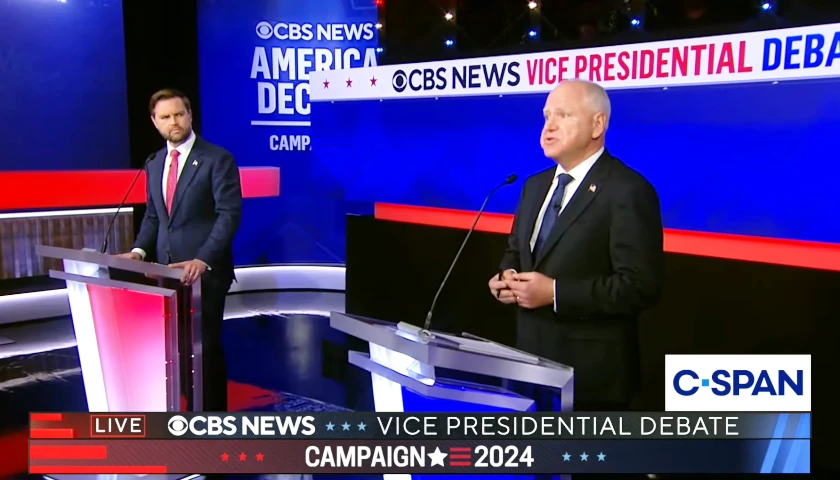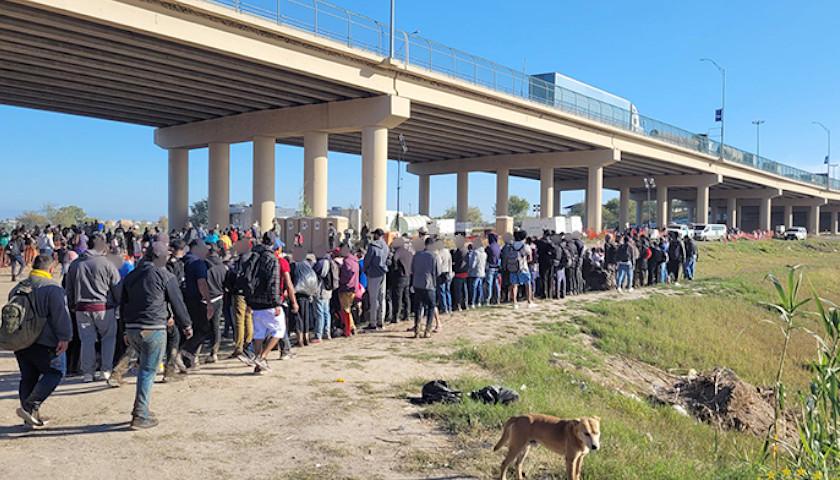On Monday’s Tennessee Star Report with Michael Patrick Leahy – broadcast on Nashville’s Talk Radio 98.3 and 1510 WLAC weekdays from 5:00 am to 8:00 am – Leahy welcomed good friend, and attorney Jim Larew from Iowa to talk about the annual Democratic party event Jefferson-Jackson Day and it’s festivities.
Towards the end of the segment, Larew went into detail on how precincts in Iowa present a twist that makes it unlike any other event politically in terms of the primary where there must be at least a 15% viability for candidates to continue on to the next tier in the counties.
Leahy: We are joined on the line now by my good friend and the bravest man in Iowa Jim Larew. Jim, welcome.
Larew: We’ll I’d like to know how did I get that acknowledgment of my bravery Michael?
Leahy: Well because we were talking over the weekend Jim and you have accepted apparently our appointment as an ambassador (Chuckles) of the Tennessee Star Report to the 2020 Democratic field.
Larew: That’s wonderful. You’re coming to Iowa in November and we’ll be here for a few days and show you around and what’s going on.
Leahy: Yeah. Coming up to Iowa. We’ll be arriving Halloween eve. Perhaps that’s an appropriate time to come up on Halloween. Arriving there that evening in Des Moines and you will be my guide to the 2020 Presidential field. We hope we’ll be broadcasting live on Friday, November first from our affiliate in Des Moines, WHO.
A long storied and significant radio station in Iowa. Then that evening there’s a big Democratic event there. Tell us about what that event is. Of course, we’re going to attempt to get press credentials for that. What is the big event going on Friday, November the first?
Larew: This is the annual fundraising event for the Democratic party called Jefferson Jackson Days and it’s been renamed in recent years. It’s the annual fundraising and every four years for the last several decades, they changed the date to make it November rather than the spring in order to accommodate Presidential candidates part of the caucus season.
Over time it’s proven to be a pretty significant event. I think by all accounts when Barack Obama first became the nominee of the party, he sort of rose from all others, the performance that he gave and the substance of the speech and the turn out of people for him. One had a sense in the ground for the first time really this his was a campaign that was getting some lift.
So all candidates will come and they’ll be restricted to time they can talk. There will be a large audience and a large fall. It’s normally broadcasted throughout the country via C-SPAN and other affiliates. It’s a big deal. It’s a good opportunity to get some measure of how the various campaigns are going.
Leahy: So, I think this is the Wells Fargo Arena. What’s the capacity there like 5,000?
Larew: Yeah, I think they squeeze in at least that many. Since it’s a sports arena they have a floor and they fill that with chairs and then up into the bleachers that people normally sit at for contests are also filled and each of the campaigns buys tickets and they’re various supporters are there. And outside. It’s a pretty rowdy, fun place.
Leahy: It is.
Larew: It’s always been an energetic and positive kind of environment and a place where candidates started using and some very well succeed at it.
Leahy: If we secure press credentials then and we’ll try to come back, will you be able to come back with us as we attempt to interview the various candidates? How many presidential candidates will be there? 10-15?
Larew: Good question. I think they’ll let anyone who’s still running probably have some time and equal time. Right now there are still more than 20 candidates. Some of them you don’t hear very often. There are some that are dropping off. There may be some more that are dropping off before then. But now we have a field of at least 20 I think.
Leahy: Very very interesting. So we’ll do our best to try and get interviews with them and see if they’ll give us a few moments. What I find interesting Jim is how much of this is a predictor shall we say of where the caucuses will go. The caucuses will be held last week of January or first week of February coming up?
Larew: First week of February. February three is the date. I think what you get a sense of is if the caucus attendee population was static every four years it would be easier to predict who’s going to win and lose. Characteristically the people who win or at least surprise or expand the number of people in some way who attend the caucuses, that was particularly true with Obama. There were just waves of people who never participated before.
And you’ll get some sense of whether that’s happening at all. And what’s campaigned by the turn out of the people who attend in the Wells Fargo hall. There will also be events outside the hall. And you get a sense of what we call here the ‘ground game.’ People who are able to turn out crowds and that’s not necessarily a one to one predictor of how things are going to go on February third.
But it’s pretty good. And maybe also you can tell pretty clearly that some campaigns are just not getting much traction because they’ll have a hard time organizing for that event. So it’s all a lot of commotion. A lot of positive energy. With some, I think there’s a sense of who is clearly catching hold of probably and who is not. It may be harder to define who’s in the middle and which way they’re going.
Leahy: The caucus event takes place in 3000 different locations around the state on February 3rd.
Larew: 1000’s. And then they just have a new wrinkle. They say there can be some satellite locations. I’m not sure exactly what that’s going to mean. When we started doing this about the 1970’s we literally had our caucus or our precinct in a grade school gym. Enough room so that upon the stage of the grade school gym there were actual political scientists watching as though they were teachers or something (Inaudible talk) political operation.
(Leahy chuckles) Any more the crowds are so large that almost wherever you hold them it’s not big enough. That’s a different kind of problem to have. But they literally are in precinct’s which in Iowa there are 2400 precincts. But then you add that to the areas where you need have to have supplemental sites. And they’ll be maybe as much as 3000 sites maybe more who knows.
Leahy: As an example, what is the caucus even like? Did you go to the one last cycle of 2016?
Larew: No, that’s the first one I missed in a long time. I was down in Alabama working on a legal case and I couldn’t get back in time. Here’s a twist that makes it unlike any other event politically in terms of the primary. In Iowa, you have to have in each precinct the same rule applies. Something called viability. And so you have to at least 15% of those who attend standing up for a candidate or if that persons’ follower has to expand or do something else.
And that becomes I think particularly important as we look at the numbers right now where you have only two candidates in Iowa who have more than 15%. And that’s Warren and Biden. All others have less. And so in every caucus, they’re going to have to do something else.
They’ll have strategies. They’ll have leaders within that and they’ll decide where to go. Depending on who a lot of person’s second choices are or how well organized they are to follow precincts captains directions. That will cause there to be a lot of volatility.
Leahy: How do they determine whether a person has 15% viability? How do they do that? Do they do that in a poll?
Larew: Most of the caucuses when they get you literally out of your chairs and you go stand in a group.
Leahy: Oh.
Larew: And you count yourself out. And you compare your count to the overall count. The doors close at a very specific time and nobody can get in after that. So that’s the number and then you count your group and it’s confirmed by the caucus chair. And then you’re either above or below 15%.
And then you’re given some time, usually 15 minutes or so to go to some other corner and they recount. And they do that until there are no groups that are less than 15%. Undecided can be a group but sometimes, depending on the caucus, there’ll be a viable group of undecided. And that’s how they know. What they’re basically doing is picking delegates to the next tier of activity which in Iowa is called a county. There are 99 counties.
Leahy: Yes. So the February third is the local precinct caucus. And then they pick delegates to go to the county caucus. A month later or two months later?
Larew: Exactly. And some will be chosen then to go to the state. The delegate count is actually whats reported out. And it’s a little bit confusing in Iowa because the Republicans who will also be meeting on that night, and there won’t be controversy there. There’s no real challenge to Trump at least in Iowa. Republicans do an in-person primary election. They actually cast ballots and they give a pure report that’s the equivalent to a primary election result. In Iowa, it’s a little bit of a twist. Its a delegate selection process. But they have a way of reporting it out so that people get a sense of…
Leahy: Who won or who lost.
Listen to the full hour:
– – –
Tune in weekdays from 5:00 – 8:00 am to the Tennessee Star Report with Michael Patrick Leahy on Talk Radio 98.3 FM WLAC 1510. Listen online at iHeart Radio.
Background Photo “Iowa State Fair” by Phil Roeder. CC BY 2.0.





